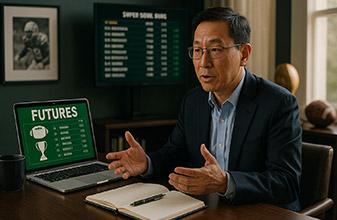DD's numbers add up, but how to implement?
It does make sense: "light green play" might indicate spreading
$25 to $150 or so, or average betting around $60, meaning about $6,000
per hr, or an expected casino average take of about $60 per hr,
(conversely an expected expert player take around $60 per hr but we
won't talk about that now). If the casino wants to comp around one
third of their expected take, they should comp around $20 per hr. or
$400 for 20 hrs of play.
My question arises partly from my experience. I only have about 220hrs
of actual play logged, but I've been rigorous about AP for all of them.
And I've never had a casino offer me anything. From the start, I did
generally get player cards, and after about 80 hrs of play I learned
that one is supposed to ask the pit for comps (table play comps don't
show up on the actual electronic card like slot comps do). Since then
I occasionally ask for and get a comp for a buffet or other restaurant.
But, despite tactics such as flirting with a bit-boss-chick whom I
really think did like me -- I've never learned what my actual comp
balance is, or what my play rating is, they'll simply say yes or no to
the buffet or room.
So, my question is what is the real range of the rating-to-play ratio
for comps? Apparantly the standard system is to rate the player from
1 to 3. 3 means cpmplete dumb ass and 1 means skilled basic strategy
player. And I guess a 1 rating is supposed to yield about 20% of your
expected loss rate which is only about 0.5%, or in the case mentioned
above only about $6 per hr. So, what comp rate should a 3 rating give?
And, in reality are there further ratings, beyond 1 for instace if they
suspect but haven't proved yet that you are an AP -- possibly a 0
rating?










